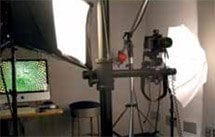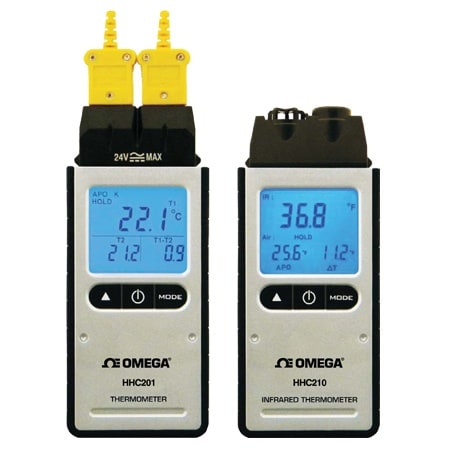Human vision depends on light. Light reflects off surfaces into the eyes, passing through the cornea and pupil to form an image on the retina. The eye is sensitive to a very wide range of light intensity but at low levels loses the ability to discern detail. That’s why precision work like surgery, measurement or assembly is best done under bright light.
Working under poor lighting causes fatigue and mistakes. Industrial accidents are more common when light levels are low. In addition, good lighting determines how well people can observe a show and take quality photographs. To aid in understanding light intensity measurement this White Paper from OMEGA Engineering addresses:
- What is light?
- How light is measured?
- Situations needing light measurement
- Light measurement technology
- Light measurement equipment
What is Light?
Light is a form of electromagnetic energy that travels through space as a wave. Like microwaves and x-rays those waves have a wavelength and a frequency. The difference is that humans possess receptors able to sense energy with wavelengths between 400 and 700 nm and turn it into images.
Individual wavelengths correspond to distinct colors. Light with a wavelength around 420 nm is perceived as blue, 525 nm is green and 635 nm is red. Longer wavelengths are termed infrared (which is sensed as heat) and shorter waves are ultraviolet and then x-rays.
Light sources based on heat (“incandescent” sources) radiate electromagnetic energy across all wavelengths, which is why they appear white. The actual distribution of wavelengths within that light depends on the temperature of the source. Fluorescent lights appear white only as a result of fluorescence from a coating on the glass or tube and LEDs emit light only at one specific wavelength.
How light is measured?
A light source, like the filament of an incandescent bulb, emits light in all directions. Effectively, it sits at the center of a sphere of radiated light (which is why light units reference the steradian). The total energy of all the light given off is termed the “luminous flux.”
The fundamental unit of light is the candela, nominally the light given off by one candle, or more precisely, “a source that emits monochromatic radiation of frequency 540 x 1012 hertz and that has a radiant intensity in that direction of 1/683 watt per steradian.”
One candela per steradian is termed a lumen, which is the measure of light intensity people are most familiar with. However, what matters most in terms of measuring light intensity is the number of lumens falling on a surface, which is expressed as lux. So one lux is one lumen per square meter, this relating brightness to distance from the source. (In the US it’s common to express light intensity in unit of foot-candles. One foot-candle is equivalent to one lumen per square foot).
Summarizing, while light output is expressed in lumens, light intensity is measured in terms of lumens per square meter or lux.
Situations Needing Light Measurement
 Photography Studio
Photography Studio
The main reasons for measuring light intensity are to ensure that minimum standards of illumination are being met, and to determine appropriate exposure times in photography and cinematography. Four commonly encountered situations are set out below.
1. Ergonomics and Safety
Minimum illumination levels are recommended for many environments. While some, such as construction and shipyards, have very specific OSHA requirements, for general industrial applications OSHA refers to ANSI/IESNA RP-7-2001 standard, “Practice for Industrial Lighting.” This defines the minimum intensity required to safely and accurately perform a range of tasks.
In some organizations light intensity is only measured reactively, typically after a fall or other accident. A more prudent approach is to perform a lighting survey, documenting light levels throughout the workplace. If areas are found below the minimum acceptable levels an improvement plan can then be implemented.
2. Photography and Cinematography
Light intensity is at the heart of photography. Low light forces a photographer to increase exposure time or open up the lens aperture, and sometimes both. While many modern cameras have light metering built-in it’s still advantageous to know light levels around the subject, especially for studio or portrait photography.
Knowing light levels also helps ensure the reproducibility of a shot, something of concern in cinematography. By measuring light levels a cameraman can produce consistent results, ensuring continuity is maintained.
3. Weather Monitoring
While many light meters are configured for incandescent light they are still useful for providing comparisons outdoors. A meter could for example produce records showing the difference in intensity between the summer and winter solstice. Mapping light intensities in an area designated for solar arrays could help determine the optimal location for each panel. Those involved in agriculture may benefit from identifying areas of lower light intensity within a greenhouse.
4. Theater Set and Interior Design
Differences in light intensities is an effective way of directing an audience’s attention. A set designer may want a particular prop or actor cast in shadow for one scene and highlighted for the next. Likewise, an interior designer will use differences in intensity to create a particular look and feel. Establishing light levels also helps ensure the reproducibility of a particular look and feel as well as confirming that there is sufficient light for the audience to see the actors’ features.
Light Measurement Technology
Light falls on a sensor where the energy of the photons is converted to electrical charge. The more light that strikes the surface, the more charge is built up. In general terms the two are correlated. A calibration in the measurement electronics converts either current or voltage to a lux value.
Complicating matters, the human eye is not equally sensitive to all wavelengths of light and has greater sensitivity to green. Thus if equal intensities of blue light and green light fall on a meter, while the raw lux value might be the same the human observer would perceive more green light. To address this, lux meters are configured to expect light with the spectral distribution of domestic, tungsten-filament lighting.
This is defined as CIE standard illuminant A and adjusts the raw intensity measurement to better correlate with the human perception of brightness. CIE standard illuminant A is recommended for use in all applications involving the use of incandescent lighting.
Light Measurement Meters
 Indoor Work Environment
Indoor Work Environment
Rugged Handheld Environmental Meters for RPM and Light Measurement are designed as easy-to-use handheld instruments for measuring light intensity. Based on the CIE Standard Illuminant A, these units are ideal for use in areas of incandescent lighting, and will provide a reading under fluorescent lighting with a small error with a measuring range from 1 to 200,000 lux (0 to 18,580 foot candles).
These instruments are ideal for anyone needing to verify light levels in indoor work environments, for photography, theater set design, interior design and cinematography. It can be used outdoors where comparative values or ratios are sufficient but should not be relied upon for accurate intensity values owing to its CIE calibration.


